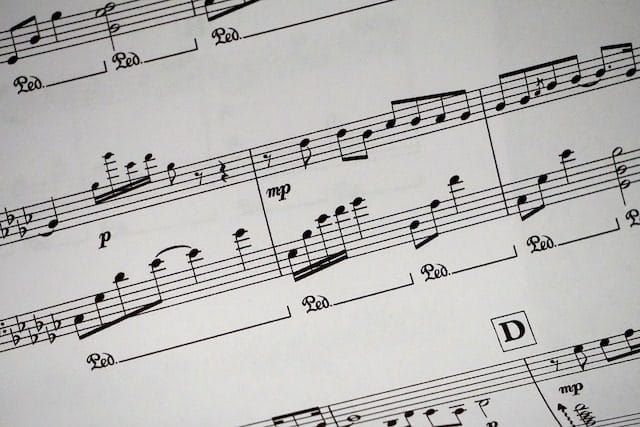Is it possible we will ever have a universal way for all humans to communicate? Imagine if you could talk to anyone on Earth in a way they would understand, and you could understand the answer. Some say universal communication will come about through technology. Simultaneous translators are getting faster and better, but still have a way to go. Plus, they’d have to conquer all 7,000-plus extant languages to be considered universal.
So, could there be a language that might end up universal?
Here are 10 forms of communication that are the closest to being universal forms of communication between humans.
10. Facial Expressions

You think you know what angry, sad, and happy look like on someone’s face? Chances are you really do. Human express core emotions on their faces as a primal form of communication. Moreover, these expressions seem to be ancient as they are shared across cultures.
The great naturalist Charles Darwin recognized his. He wrote his third book about this fact. He entitled it The Expression of the Emotions in Man and Animals and suggests that key emotions are even readable on animals. If you’ve watched great apes, you can see they ‘feel’. Research shows that chimps laugh when tickled, even as babies, and can smile. They can also read our facial expressions of pleasure and disgust.
While facial expressions for emotions might be close to universal, they lack nuance. You might signal the world is falling apart and you are about to cry but you probably can’t tell someone how to bake a cake or fix a car. Profound but not practical.
9. Gestures

Gestures add to what you can do with facial expressions. Anyone trying to communicate through a soundproof window, for example, might dip into this pool of information-giving instructions. It’s easy enough to point to signal directions and suggest movements (up, down, left, right) or signal a target of interest (point at yourself, point at someone else), but gestures vary widely between cultures.
Just look at the extensive body language gestures of the Japanese: to start with, to be polite, you never point. In Western cultures eye-contact is considered a cornerstone of polite conversation. In Japan, it signals aggression.
8. Hobo Signs
Non-verbal signals can also be written down. One set of intriguing symbols created by those travelling the American railroads, often looking for work, are ‘hobo signs’, or hobo code. Used from the 1880s until WWII, and especially widespread during the Depression, hobo signs could appear on any blank, flat location, from walls to fences.
You might leave a slanted T-shape to warn others to ‘get out fast’, a tic-tack-toe symbol to mark the house of a policeman or five circles, to mean ‘good chance to get money here’. More complex shapes meant ‘help here if sick’, ‘judge’ or conveyed other pieces of information useful to transients new to town.
This form of communication evolved in an altruistic fashion – to help those who followed in your tracks. Naturally, the motivation to do so stemmed from hoping someone would give you a heads up before you arrived in the next place.
Symbols have the advantage of being language-independent. The disadvantage is that you must see them to use them as communication. A Hobo sign enjoyed the huge advantage of lasting long after the one who ‘uttered it’ left, especially if carved into stone. Then again, a bramble might grow up over it and silence it.
7. Emoticons
![]()
Emoticons are the modern-day equivalent of Hobo signs but globally recognized. Again, they started with facial emotions, added gestures (think of the famous thumbs up emoji) and went on to add a big chunk of our most common vocabulary rendered in visual form. What started with ‘the smiley face’ has exploded into ‘pizza’, ‘coffee mug’ and ‘sail boat’. Much of everything, it seems. Every type of leaf, flower, and tree seem included. Hearts proliferate and there is a literal zoo, including humans pulling any number of poses, and don’t forget cats. Especially the cats with hearts eyes.
The vocabulary of this wordless language is so rich a crowdsourcing project translated Moby Dick by Herman Melville into Emoji Dick. You can pick up your own copy here. Good thing there is a whale emoji.
A picture is worth a thousand words, but emojis are still strikingly simple. The linking of words to symbols can only go so far, unless their starts to be consensus about the arbitrary linkages of words and pictures for complex concepts and things that are hard to cram into a tiny picture. Plus, you can’t hear them, they work visually. So, emoticons are a fantastic aid to communication but fall short as a fully-fledged form of human communication.
6. Sign Language
In the 1500s Benedictine monks were signing to side-step ‘vows of silence’. One such monk went beyond the pale. Pedro Ponce de León is called the father of education for the deaf. He invented the first manual alphabet for fingerspelling. Perhaps the most famous fingerspeller in history is the Helen Keller. Left blind and deaf after a childhood illness, she wrote and lectured extensively, championed disability rights, worked as an educator and humanitarian, and co-founded the ACLU. She was a hero to countless many and changed how the world saw people unable to see, hear, or speak.
French Sign language took off in the second half of the 1700s and led to the most widely used form of sign language, American Sign Language (ASL). Marlee Matlin famously signed her way to an Academy Award in the movie Children of a Lesser God. Today, an ASL speaker who knows only English and an ASL speaker who knows only Greek can still speak fluently, for example, making foreign travel within deaf circles one of mutual understanding.
Sign language can be written in images that bring to mind hieroglyphics, and there have been several attempts to codify writing systems. There is even a request in to create an ASL version of Wikipedia in SignWriting.
Still, the fingerspelling aspect of signing is language-dependent. Moreover, there are more than 100 variants of sign language used world-wide so not all signing systems are mutually intelligible. But the main drawback remains the silence.
5. Music

Music, like love, is often talked about as a universal language. Music can be used to express things that seem to go beyond words, and that is why it is included on this list. Music can express complex feelings and moods that can be almost indescribable using words. As such, it taps into the deepest territory of what it means to be human.
Music is more fundamentally a universal language of rhythm. Rhythm is something that all cultures share, through dance or music, no matter what kind of music or music-making instruments they possess. Anyone can tap out a rhythm—even just using a palm against any noise-making surface.
Beyond rhythm the brain responds to different combinations of notes in different ways. We can distinguish peaceful from frenetic music, for example. We can tell apart happy from sad. Music has long been used as the backdrop for movies as it heightens emotional responses and even signals the coming action.
For example, play music for individuals from a tribe in the Congo and citizens of Montreal and they will show with the same emotional responses and physiological reactions to music, even though their musical preferences vary considerably. Henry Wadsworth Longfellow is famously quoted for writing “Music is the universal language of all mankind.” Science backs up this widely-accepted notion of music’s universality.
Still, different cultures have widely varying styles of music, and anyway, how would one ask, “who do you like better, Chopin or Liszt?”
4. The Big Five Languages

So, if we need a full spoken and written language as a candidate for a future universal language we have some clear choices. While more than 7,000 languages are spoken on Earth today according to Ethnologue, most have restricted sets of speakers. Only eight languages boast more than 100 million native speakers, and almost 4,000 only have less than 10,000 speakers; 692 have fewer than 100 speakers and languages are rapidly going extinct. For example, 68 languages are still spoken in Mexico, but the most endangered is Ayapaneco and its two last fluent speakers don’t care to talk.
The handful of ‘mega-languages’ that have taken over the globe are Chinese (1.2 billion speakers), Spanish (400 million), English (360 million), Hindi (350 million) and Arabic (250 million).
Might one of these ever take over?
3. English

English stands out among the top 5 candidates for the first universal language for many reasons. It is relatively easy to learn, uses the Latin script so is relatively easy to write, and has long been the language associated with upward mobility.
Plus, when you add in the number of non-native speakers of the top five languages, each of the numbers increase, but none as dramatically as English. The total number of English speakers in the world might be as high as 2 billion. This is driven by the fact that in many places English is the language of business, the language of science and technology as well as of entertainment, where English-language cinema and pop music are exported globally.
Still, English might still be overtaken. The numbers suggest that according to population size French is on the up, especially in sub-Saharan Africa. Given how China has stepped up as a leader on the global, many parents of English-speaking kids are hiring nannies who can teach Chinese. While language teaching in the US is declining, numbers of Chinese classes is rapidly rising. China is growing so fast, if they allowed Hanyu Pinyin ‘Romanized’ spellings instead of pictograms and cultural tides turn so that China is churning out pop culture and movies the world wants to watch along with cutting-edge technology and ground-breaking science, the next generation could well be looking east for the source of ‘the global language.’
2. Math

Now, we jump to a language that is universal – that of nature. Math describes the way the world works and math literacy is called numeracy. Numeracy is the same across all cultures. Pi is always “the ratio of the circumference of a circle to its diameter” and is equal to 3.14 (with infinite trailing digits). Using the language of math, you can do everything from describing the rules of the natural world, to calculating how to land a lunar module on the moon, to counting your money.
While the fundamentals of math, from addition to geometry to calculus are uniform, the numbers aren’t. If a child reads aloud “2+2=4” in English, you will likely hear “two plus two is four, or equals 4.” Numbers in the Western world are based on Arabic numerals, but if you look at the numbers 1 to 10 it shows how different Arabic numbers are from our numbers today. Chinese uses pictograms and Hindi the Devanagari script, making these number sets mutually unintelligible.
Variables are codified, especially the universally recognized constants, but would still be described different in spoken words. E=mc2 is the most famous equation in history, and the letters stand for Energy, mass and the speed of light (c). But Einstein’s original equation was written in German, and was transitioned to English after he fled the Nazis and settled in America.
Still, despite the power of math, you can’t use it to ask someone out.
1. Programming Languages

What can describe all of math, so much more, and be used to talk to computers to make them do any number of amazing computations? Computers make the world go round, from banking to the internet to looking for intelligent alien life, and it’s all down to human-devised programming language. Actually, there are thousands of programming languages, but this is about the general concept: the speed of uptake means they are ‘universal.’ They are written in the language of logic and math using symbols and the majority are take words from English.
Programming languages originated in English-speaking countries or were devised by non-native speakers in English to promote uptake. Programming languages have vocabulary and syntax (word order) just like real languages. Key words (like “print”) define functions to do tasks and symbols (like quotes and parenthesis) help organize logic and actions (add, divide, multiply).
While a Java programmer might speak any native language, she will always type “print” to make the computer to send a message to the screen. This code will be legible to all Java programmers.
Still, there are non-English programming languages and only a fraction of the world can read programming code, much less write it from scratch. And of course, programming code runs chatbots that mimic the human ability to communicate in language, but so far you can’t use ‘code’ to order a coffee.
Maybe someday, a pool of programmers, native in a range of human languages, will write a universal translator software and bring us all together.
2 Comments
You seem to confusing number with spread in 3. More people are speaking French but as you say only in one part of the world. Even parts of the French establishment are now turning to English.
English is the default language of the world for the reasons you state. Watch any news programme from anywhere in the world and a reporter can always find someone for a vox pop.
The world’s second language is Spanish, widely spoken around the world.
Chinese not soon. Kids with nannies are not going to tip the balance.
Yes, thanks for basically agreeing with my point that English is the closest spoken language we have to a ‘universal language’. I was just trying to broaden the discussion a bit with regard to other language, using sources, and show better what it would take for a language to go into global demand. English is certainly doing it now. The point about nannies is that the wealthy are better there, ahead of the game. Where the wealthy go, many end up following, but your point is well meant and true.